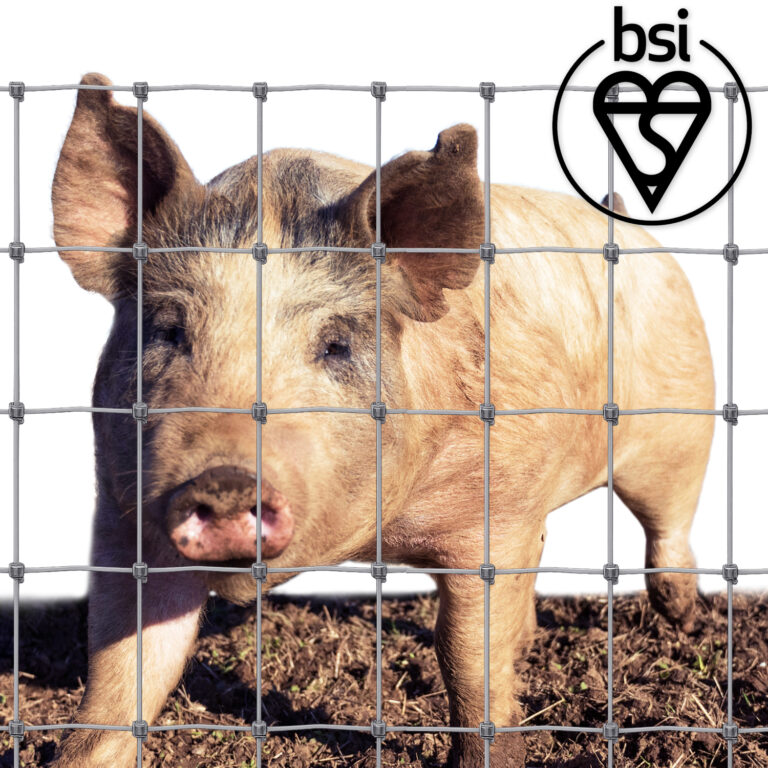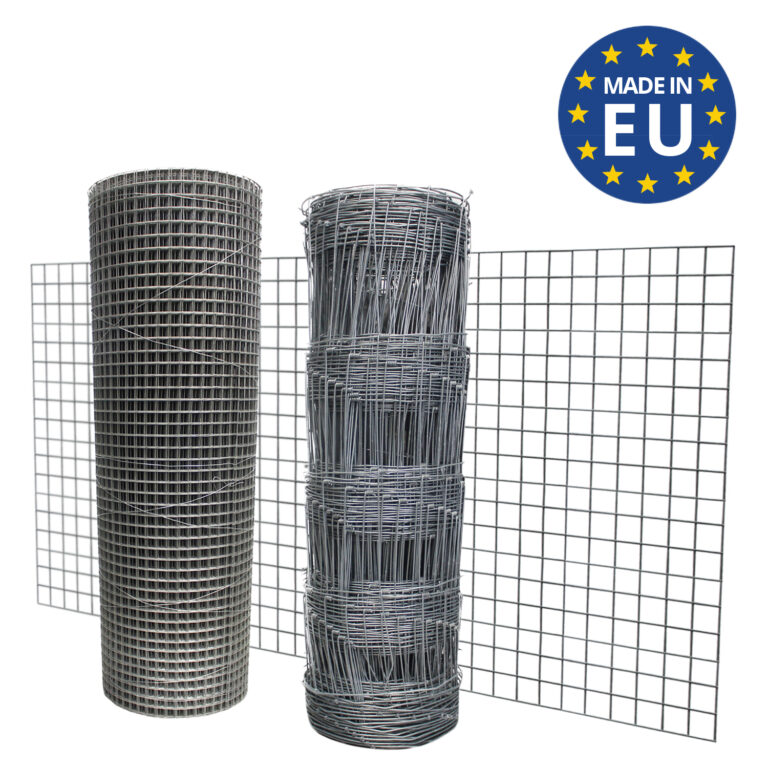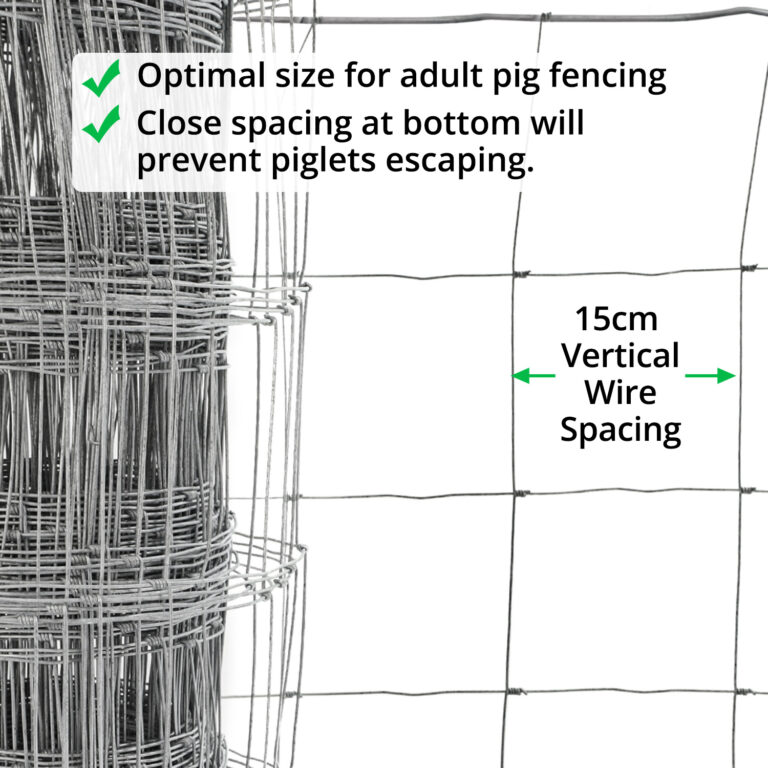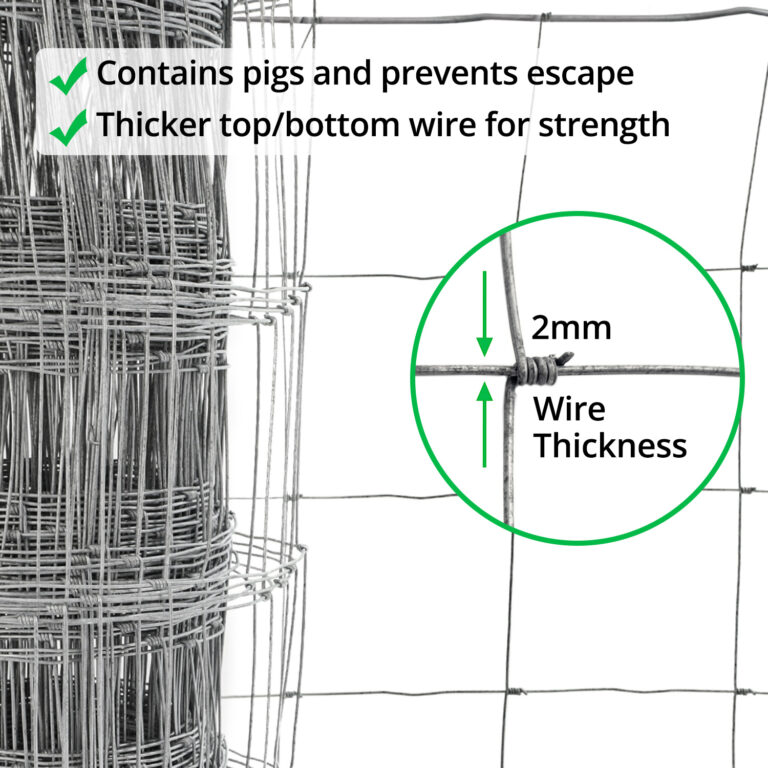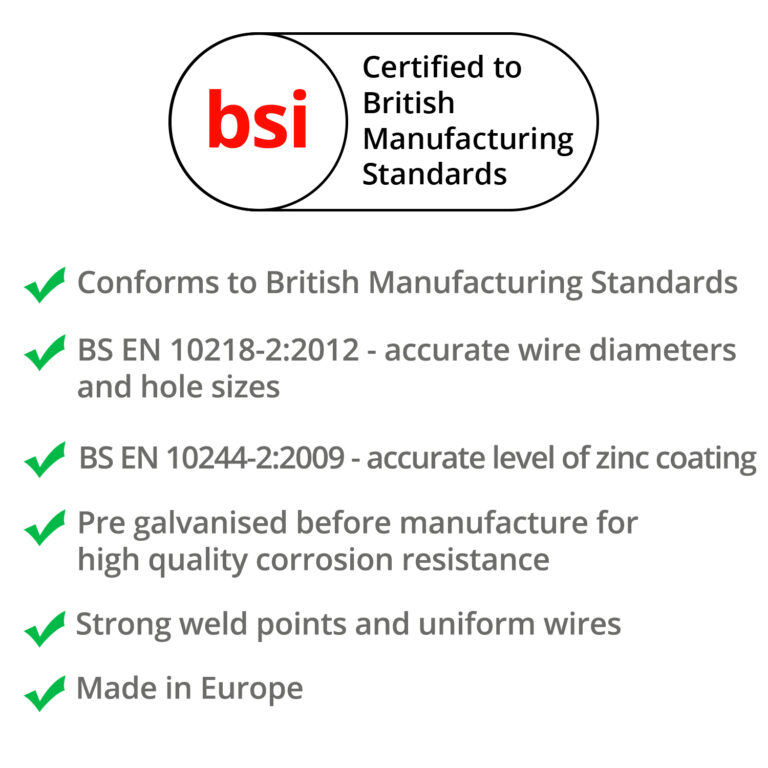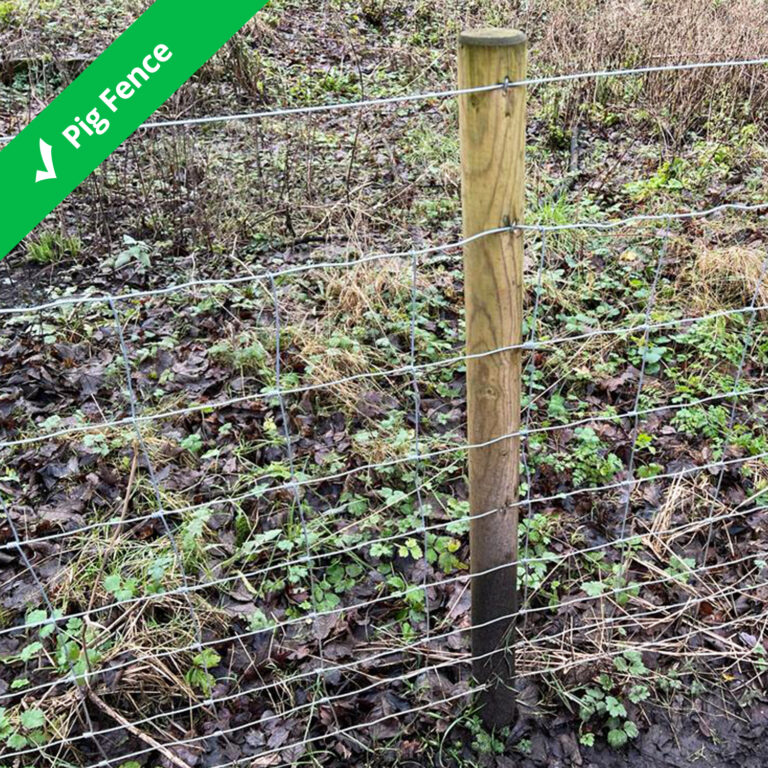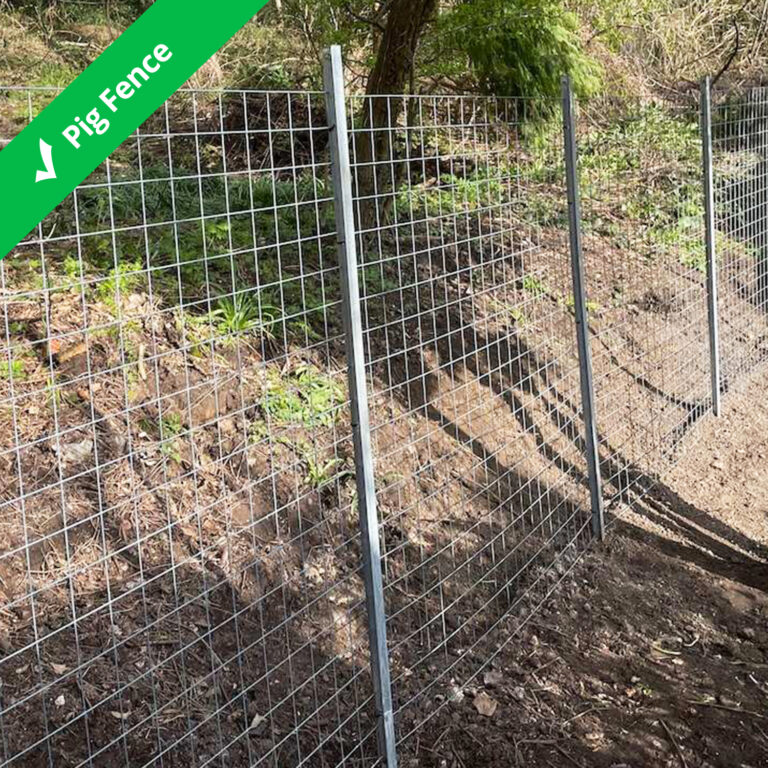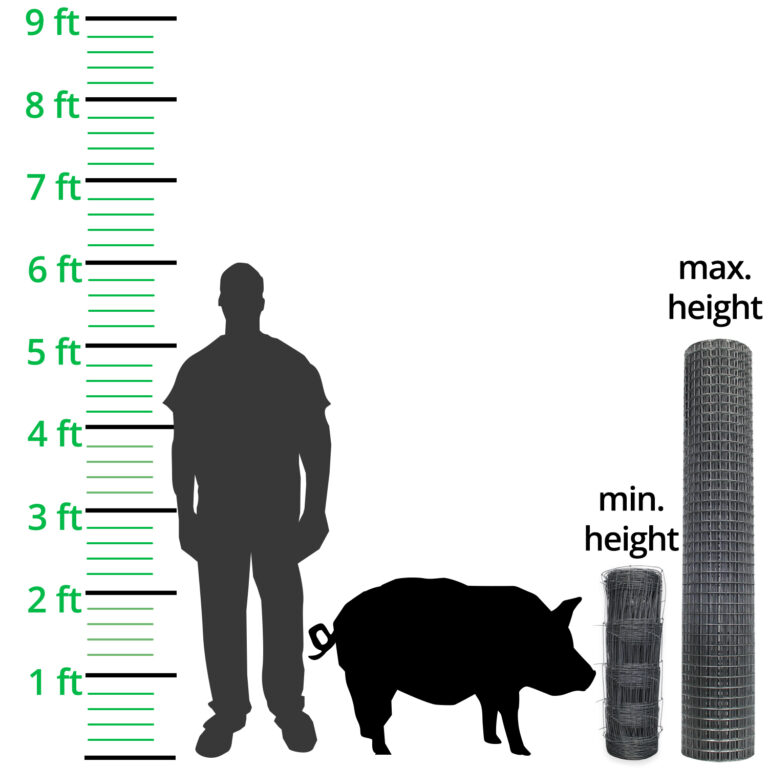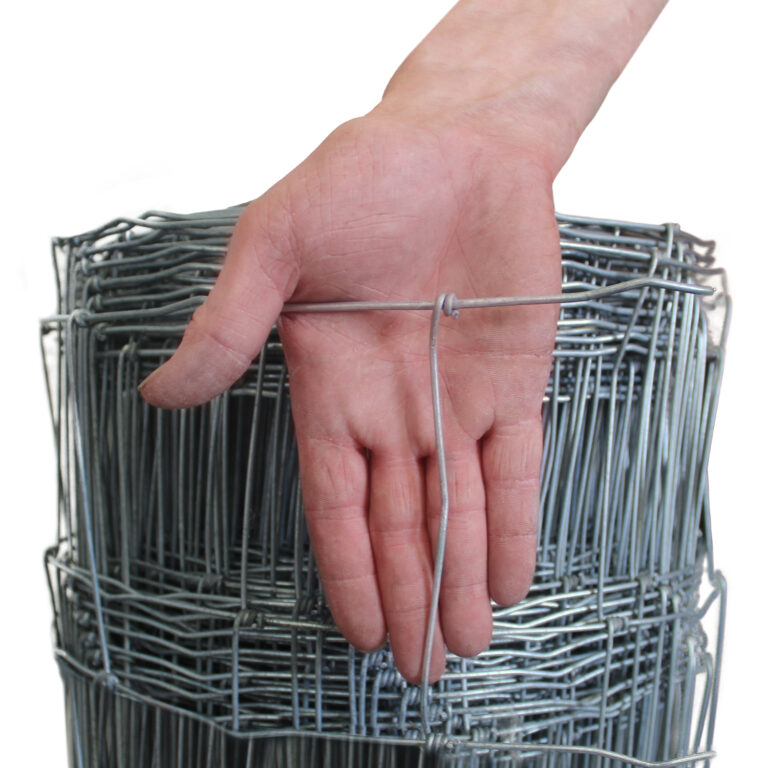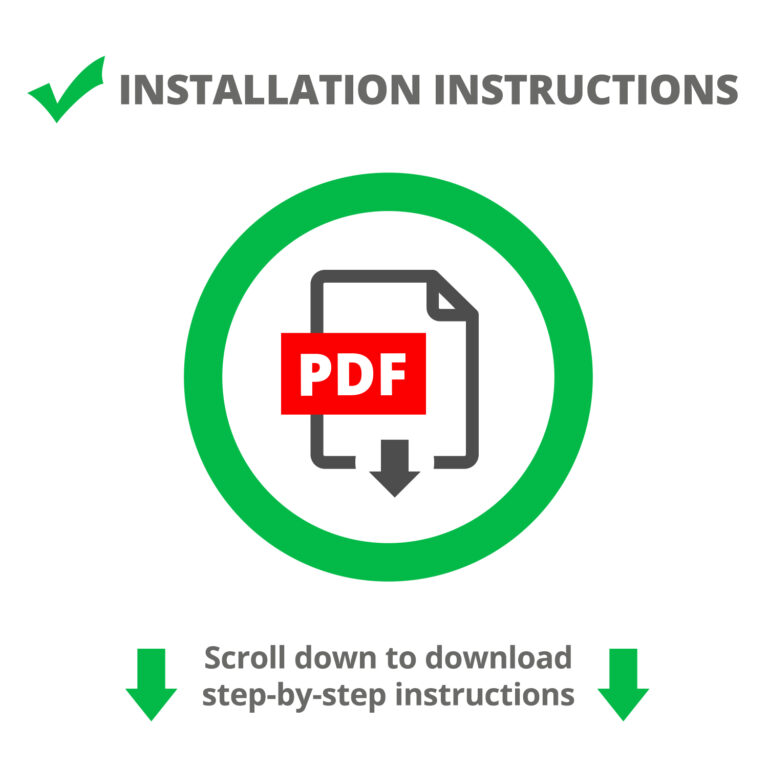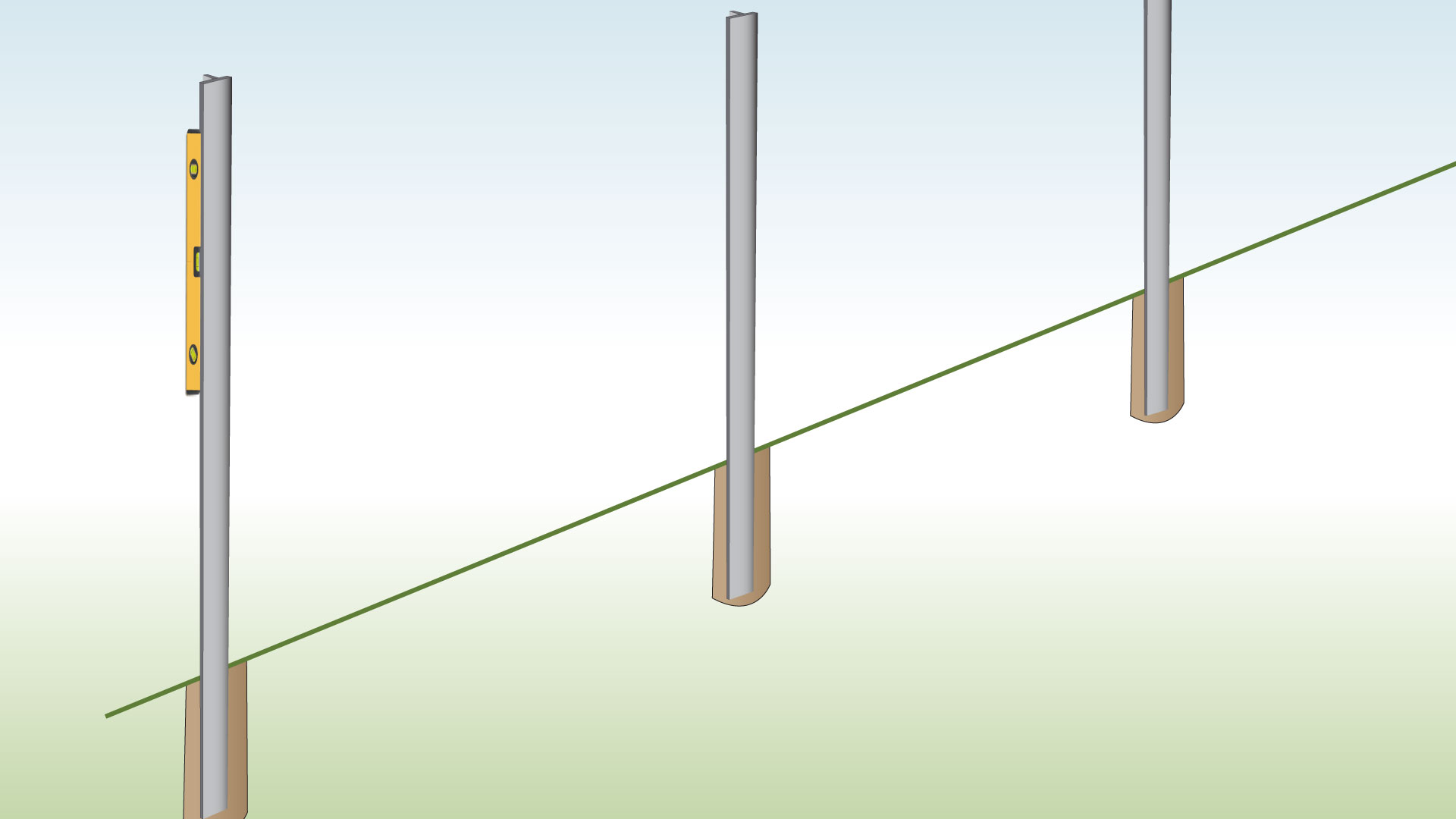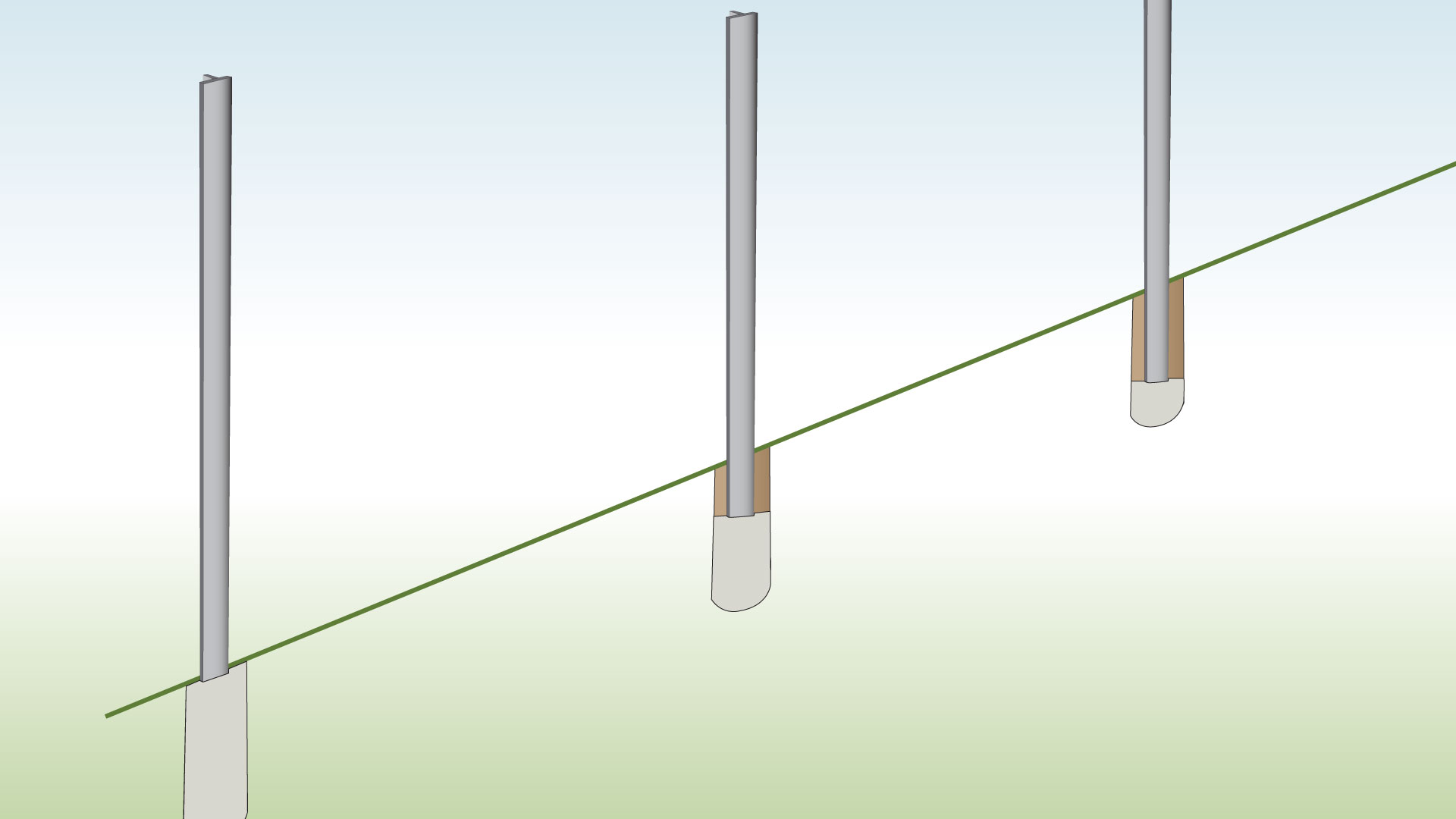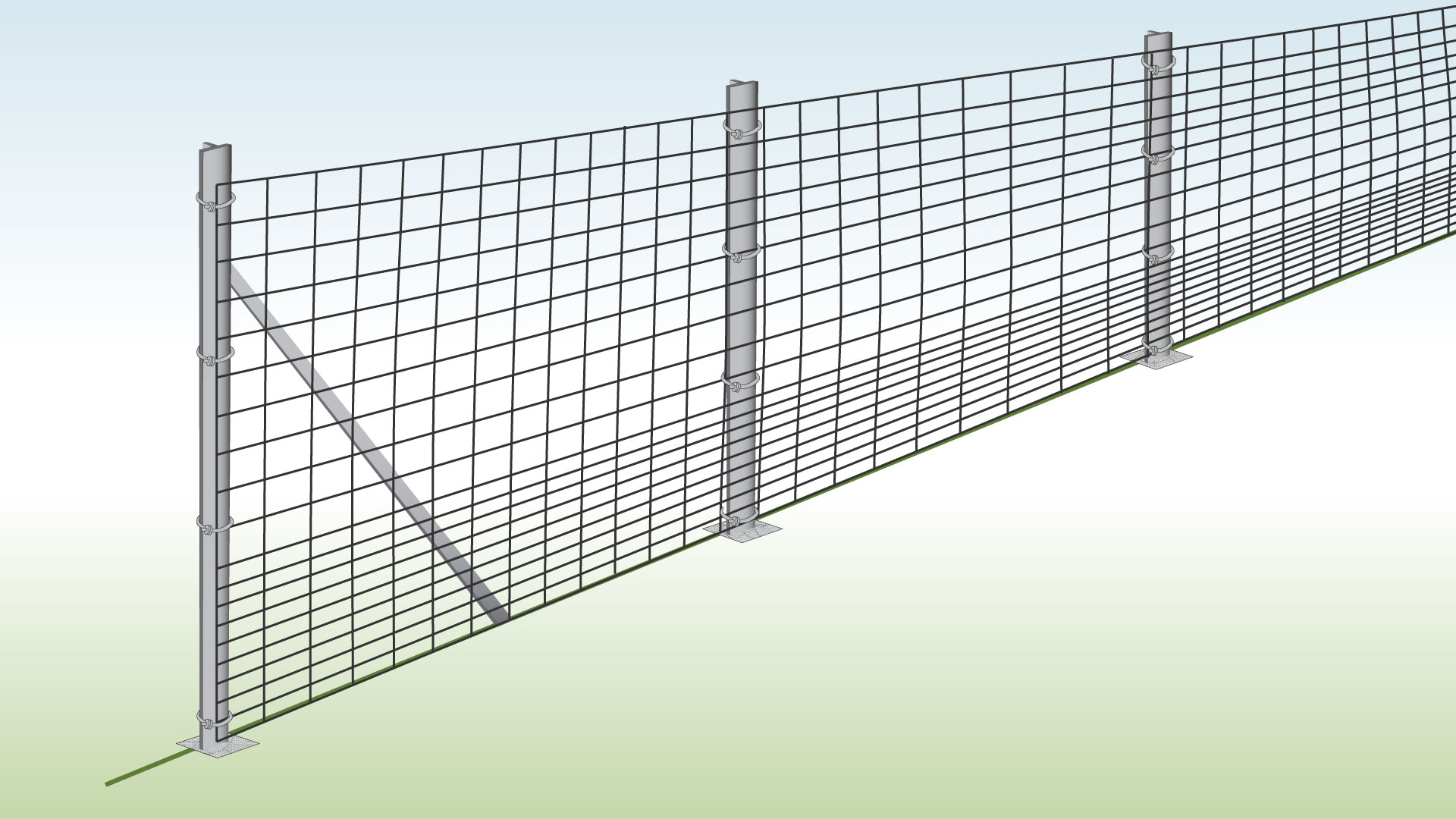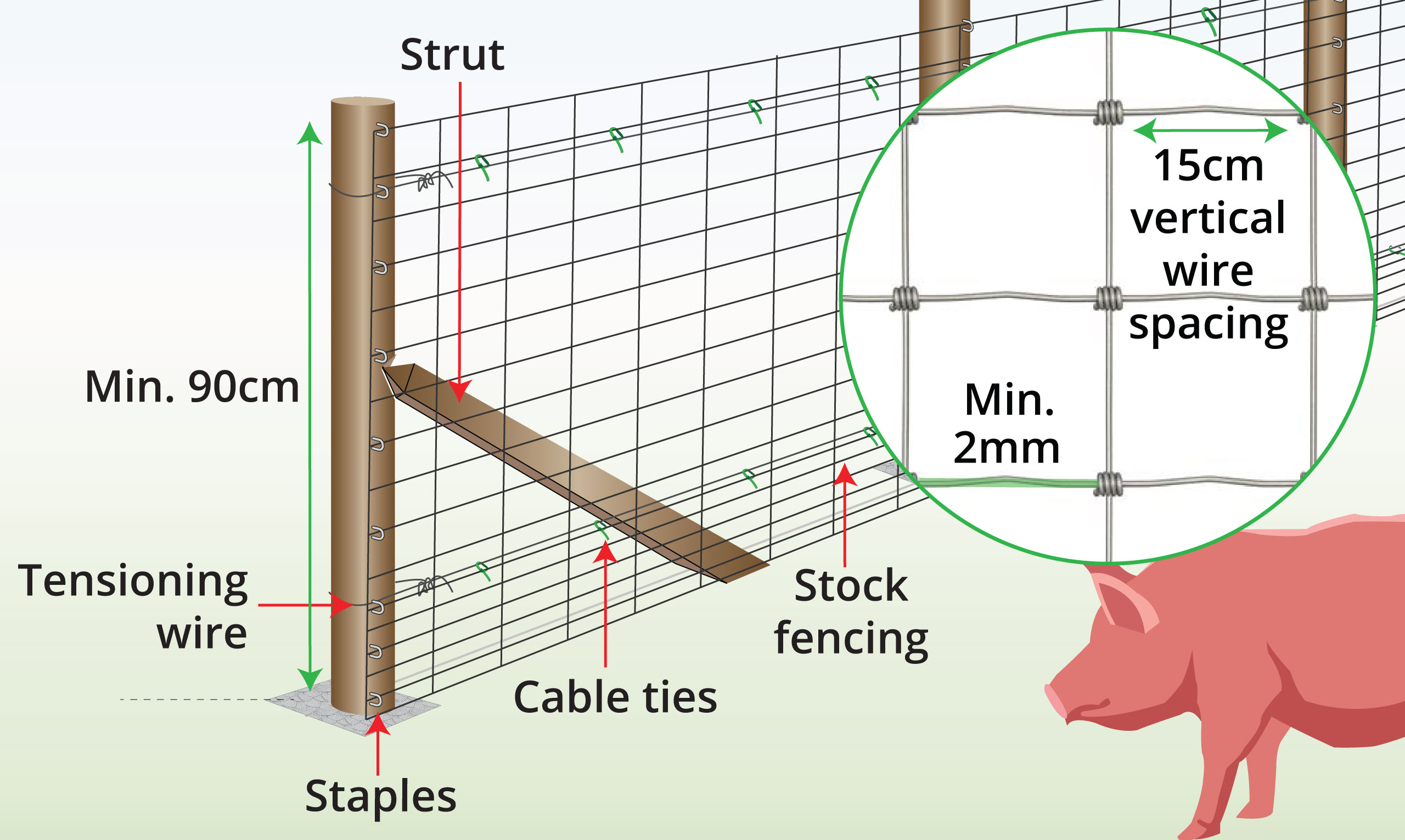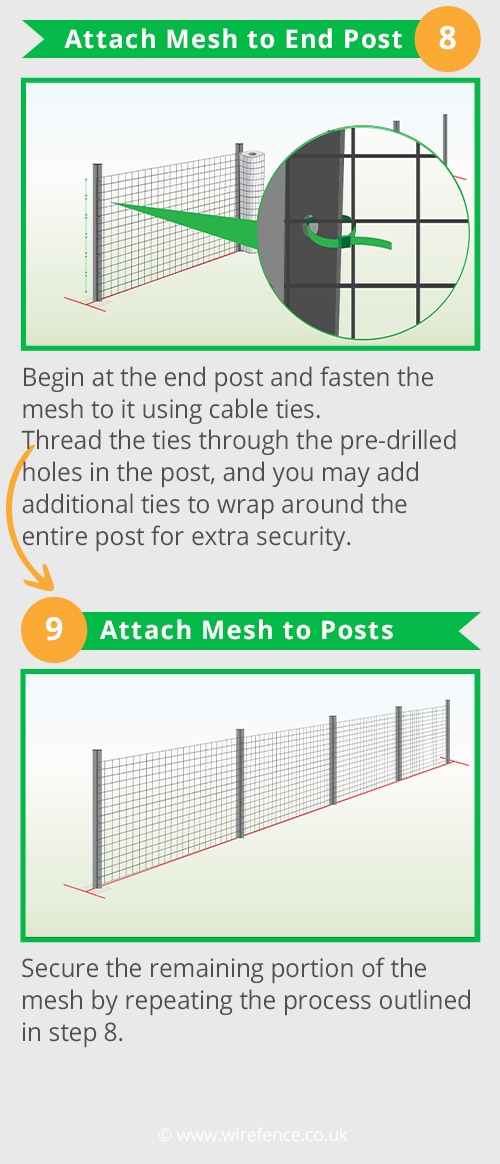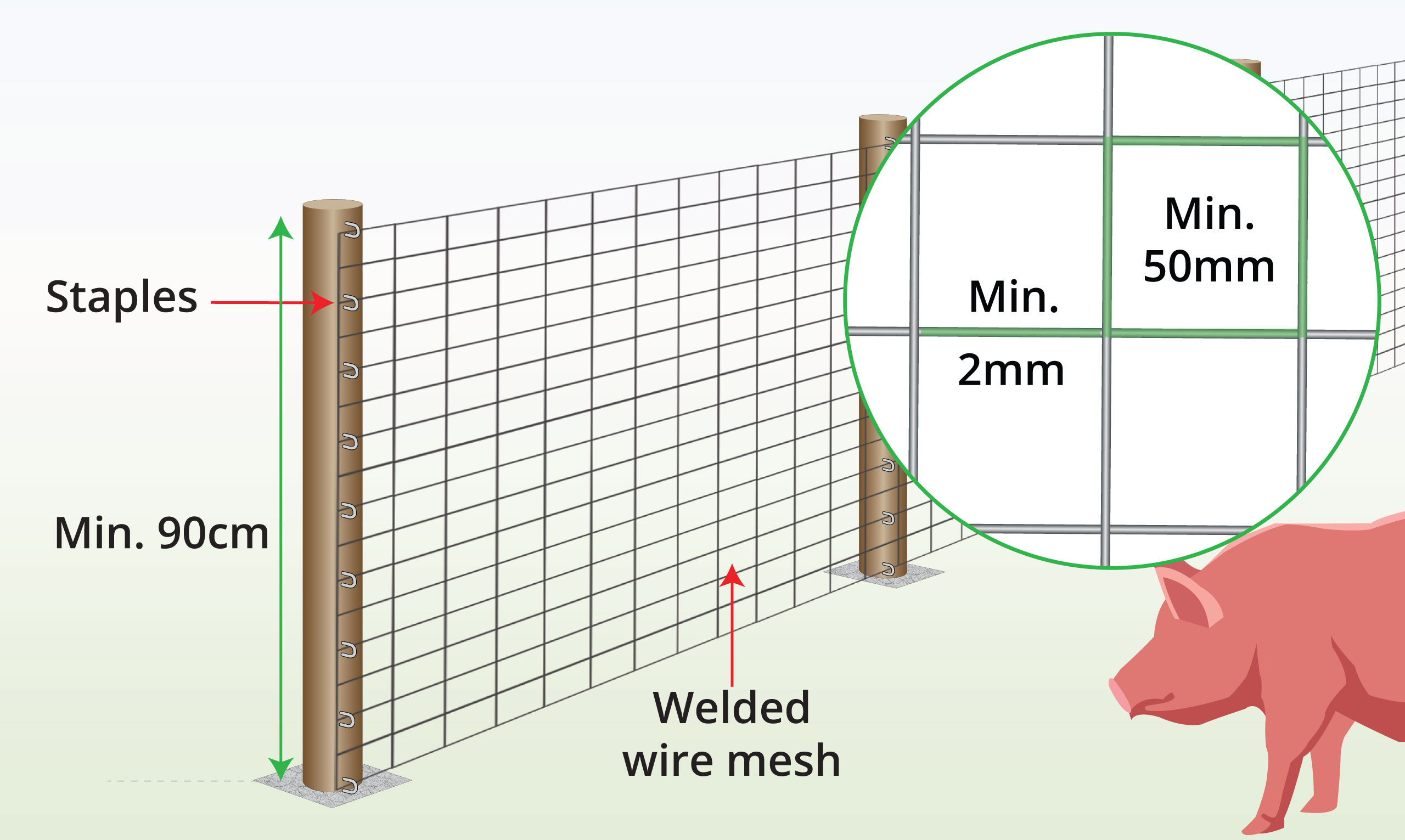Pig Wire Fence
Pig fence used for boundary marking and creating pens. Pig proof panels offer the simplest installation and pig stock fencing is the most economic.
- Manufactured in the EU, to BS EN standards

Helpful Pig Fence Information
Customer Images
Product Comparison
| Best suited to: | Wire Mesh | Stock Fence | Wire Panels |
| Smallest breeds | |||
| Medium breeds | |||
| Large breeds | |||
| Pens | Most popular | ||
| Residential gardens | Most popular | ||
| Farmland | Most popular / economic | ||
| Large fields | Most popular / economic | ||
| Ease of installation | Easy | Hard | Very easy |
| Portable | |||
| Prevents chewing through? | Yes, 2mm (14g) thick wire will prevent chewing through | ||
| Prevents lifting fencing up? | Yes, the fence should be strained tight against the floor or dug into the ground. If not the pigs will get their snouts underneath and lift the fence up | ||
| Prevents pushing over? | Yes, add electric or barbed wire for extra protection | ||
| Financial | |||
| Cost | ££ | £ | ££ |
| Cost per sq meter (starting from) | £9.40 | £1.02 | £9.10 |
| Discounts for multi purchase |
– viewable on product pages & automatically calculated for you during checkout
|
||
| Minimum qty available to purchase | 6m | 50m | 1.8m |
| General | |||
| Delivered as | Roll | Roll | Panel |
| Made in | EU | EU | EU |
| Conforms to British Manufacturing Standards | BS EN 10218-2:2012
BS EN 10244-2:2009 |
BS EN 10223-5:2012
BS EN 10244-2:2009 BS EN 10218-2:2012 BS EN 1179:2003 |
BS EN 1461:2009 |
| Construction | |||
| Maximum height availability | 2.7m (8.8ft) | 80cm (2.6ft) | 1.8m (6ft) |
| Mesh material | Galvanised steel | Galvanised steel | Galvanised steel |
| Mesh construction | Welded | Knotted hinge joint | Welded |
| Hole size available | 13mm x 13mm+ | 100mm x 150mm+ | 25mm x 25mm+ |
| Wire diameter (gauge) | 2mm+ | 2mm+ | 2mm+ |
| Length | Can be joined together to create any length required | ||
| Colour | Grey | Grey | Grey |
| Average product weight | 15kg per roll | 20kg | 2kg per panel |
| Strength & environment | |||
| Corrosion resistant | |||
| Abrasion resistance | Very good | Very good | Very good |
| Increase lifespan | Pigs will try to get through a fence by pushing and chewing. Add barbed wire or a strand of electric tape to prevent this from happening. | ||
| Suited to Environments | C2-C4 | C2-C4 | C2-C4 |
| Installation & maintenance | |||
| Speed of installation | Quick | Long | Very quick |
| Experience required to install | Low | Medium | None |
| Can be installed with wooden posts? | |||
| Can be installed with metal posts? | |||
| Distance between posts | 2-3 meters | 2-3 meters | 2 meters |
| Can stand alone without posts? | |||
| Join together using | U Staples | U Staples | U Staples |
| Cut using | Wire / bolt cutters | Wire / bolt cutters | Wire / bolt cutters |
| Prevents lifting fencing up with snout? | Strain the fence tight against the floor or dig into the ground to prevent the fencing being lifted up by the hogs snout | ||
| Prevents pushing over? | Yes, add electric or barbed wire for extra protection | ||
| Requires protective glove for handling | |||
| Appearance | |||
| General look | Metal mesh | Field fence | Metal mesh |
| Invisible from a distance | |||
| Can be disguised | Yes, can easily be covered by climbing plants up the mesh or using garden screening | ||
Size Guide
| Breed | Height required | Hole size required | Wire diameter required |
| Piglets | 40cm | 25mm x 25mm | 1mm (19g) |
| Small & micro | 40cm | 25mm x 25mm | 1.6mm (16g) |
| Medium breed | 60cm | 75mm x 75mm | 2mm (14g) |
| Large breed | 80cm | 150mm x 150mm | 2mm (14g) |
| Keep out other animals | |||
| Dog High jumping and aggressive dogs may require a taller or stronger fence. See our dog fence category for more details | 1.5m | 50mm x 50mm | 2mm (14g) |
| Chickens | 1.5m | 50mm x 50mm | 0.7mm (22g) |
| Fox | 1.8m | 50mm x 50mm | 2mm (14g) |
| Badger | 1.3m | 50mm x 50mm | 2.5mm |
| Rabbits | 105cm | 31mm x 31mm | 1.6mm (16g) |
|
View all Animal and Pet Fencing |
|||
Attachments
| Attach to: | How to: |
| T Posts
(Wire ties) |
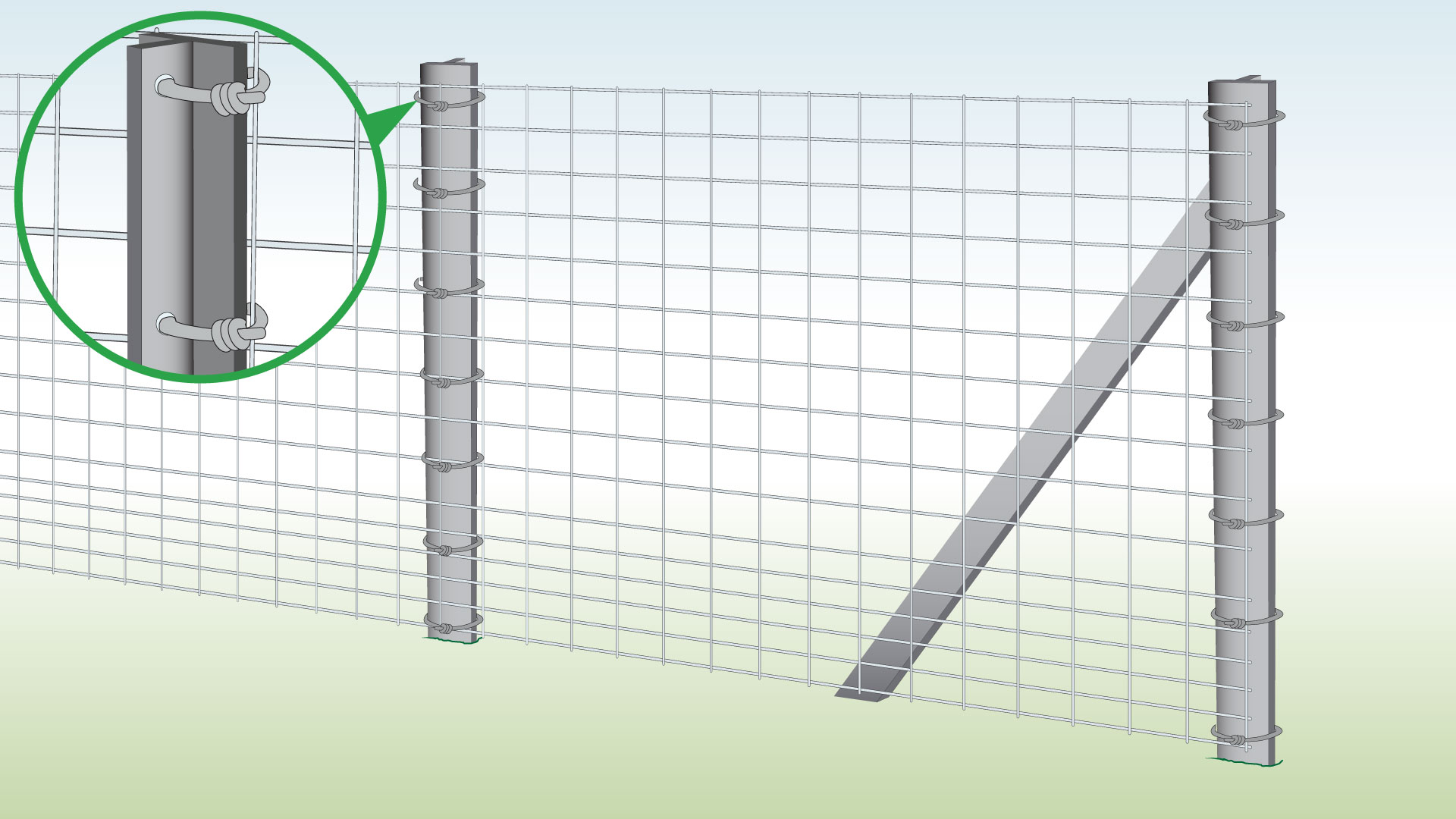 |
| Wood/Wooden Posts (Staples) |  |
Installation Instructions
Stock fence (T posts)
Stock fence (Wood post)
Panels
Wire mesh (T posts)
Wire mesh (Wood post)
| To Do | Explanation |
| Completed Installation
|
Set T posts 2–3 m apart, reinforce with struts and secure with concrete. Attach the pig fence to the first post, stretching it tight and securing it along the middle posts until the end.
Full instructions below or watch this video |
| Step 1 – Measure Post Distance
|
Measure and mark the post positions, spacing them 2–3 m apart. |
| Step 2 – Dig Holes
|
Dig the holes and place the posts inside, keeping them aligned with the flat sides facing outwards. |
| Step 3 – Set Posts in Concrete
|
Secure the posts with concrete to ensure they are stable. |
| Step 4 – Install Reinforcement Struts
|
Attach the reinforcement strut by aligning its hole with the second hole from the top of the T post. |
| Step 5 – Secure fencing to First Post
|
Attach the fence to the first end post using wire ties. |
| Step 6 – Stretch It Tight
|
Unroll the fence to the other end, keeping it tight between the end posts.
Cut any excess, secure it to the end post as before, and then release the tension. |
| Step 7 – Secure to Middle Posts
|
Finally, go along the fence and fasten it to the middle posts using the same wire ties. |
FAQ’s
What is pig netting?
Also known as hog fencing. It is a type wire mesh specifically designed to keep pigs in a given area.
What size should I select for smaller breeds?
If you constructing a fence for small breeds such as Kunekune you will need a wire diameter of 1.6mm and a height of 40cm.

